Garlic is a nutrient-rich root that is popular all over the world. Even though this root is rich in antioxidants and has a lot of medicinal uses, it can go bad if you do not store it well.
How can you tell if your garlic is bad?
You can tell that your garlic is bad when it feels soft and mushy, it has yellow or brown spots inside, there are insects inside, or you can see mold growing on it. You can also monitor the taste and smell if they are unpleasant to you.
For how long can you keep garlic before it goes bad? How can you store your garlic? Continue reading to find out.
Table of Contents
How to Tell if Garlic Is Bad
Here are some ways to tell if your garlic is bad or not:
1. Visible Rotten Spots on the Head and Peels
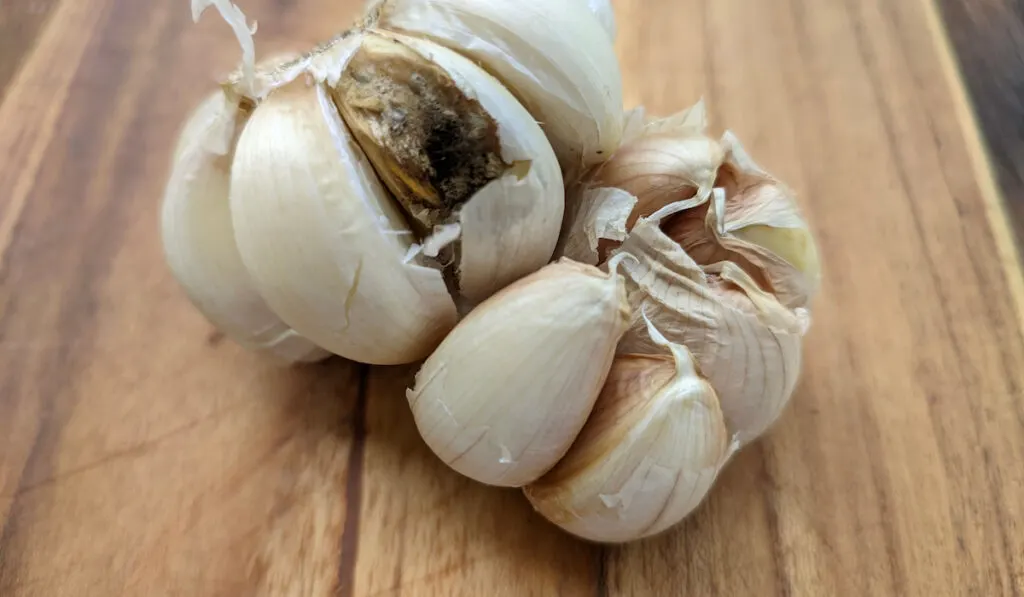
Hold the garlic and take a good look at it. If you can find some moldy spots on the head and peel of the cloves, the garlic has gone bad, and you should dispose of it.
Mold indicates that the garlic is already decomposing and the fungi responsible is mature enough to spread to other garlic and foods nearby.
Note that the rotten spots can come in any color or a combination of assorted colors.
2. The Cloves Become Soft and Mushy
Fresh garlic is firm when you feel it. If the garlic feels mushy and soft, it has gone bad and has lost a lot of its nutritional value.
A soft and mushy garlic is one that is already decomposing from the inside. If you examine it more closely, you should also notice holes inside. If your garlic feels too soft, dispose of it as you have no use for it.
3. Yellow or Brown Spots Inside
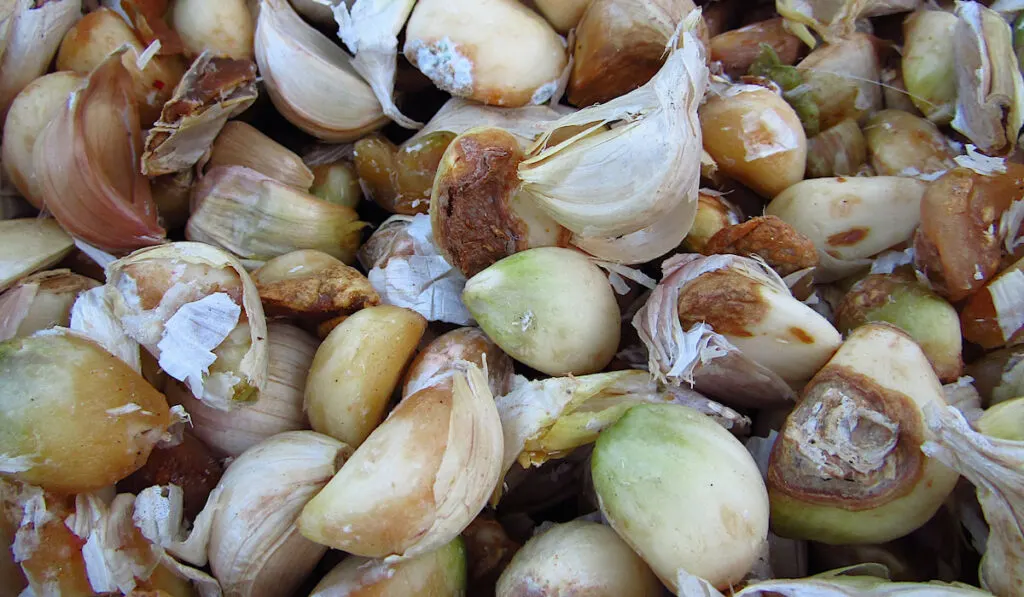
You can take your inspection further and remove the peel from the cloves. Garlic cloves should be pale yellow or near white. If the cloves appear brown, dark yellow, or have any color that is not bright, they have most likely gone bad. The discoloration of garlic is a great way to tell if your garlic has gone bad or not because most garlic have the same color.
4. Presence of a Foul Smell
Garlic is rich in sulfur, so its smell should not be foul or too unpleasant. You can tell that your garlic is bad through the smell as fresh garlic should smell fresh and pungent.
Then it is up to you to decide if you should eat the garlic or not.
5. New Sprouts Growing

One great way to tell that you have kept your garlic for too long is when you see sprouts growing from the cloves. You can either eat the cloves quickly, plant them, or dispose of them.
Note that garlic with sprouts tends to have healthier antioxidants so you do not need to dispose of them.
To tell if the garlic has gone beyond eating, cut and inspect to see if they are green or discolored inside.
6. The Presence of Insects Inside
If you can find holes in your garlic, there is a high chance that there are insects inside the holes.
Spoiled garlic often attracts small beetles and weevils. Also, you could find housefly larvae in the garlic, especially if you kept it in a richly humid environment. Whatever the case, do not eat garlic with insects inside.
7. The Taste Is Off
Well, you should not be tasting bad garlic in the first place. Tasting should be the last thing that you should do if you want to find out if the garlic is bad or not.
The taste of garlic should not be sour or bitter. So, if the taste is weird to you, you should not eat or cook with it because it has gone bad.
Now you can easily identify spoiled garlic.
The Best Ways to Store Raw Garlic
Here are some recommended ways to store raw garlic:
1. Do Not Pull Off the Cloves
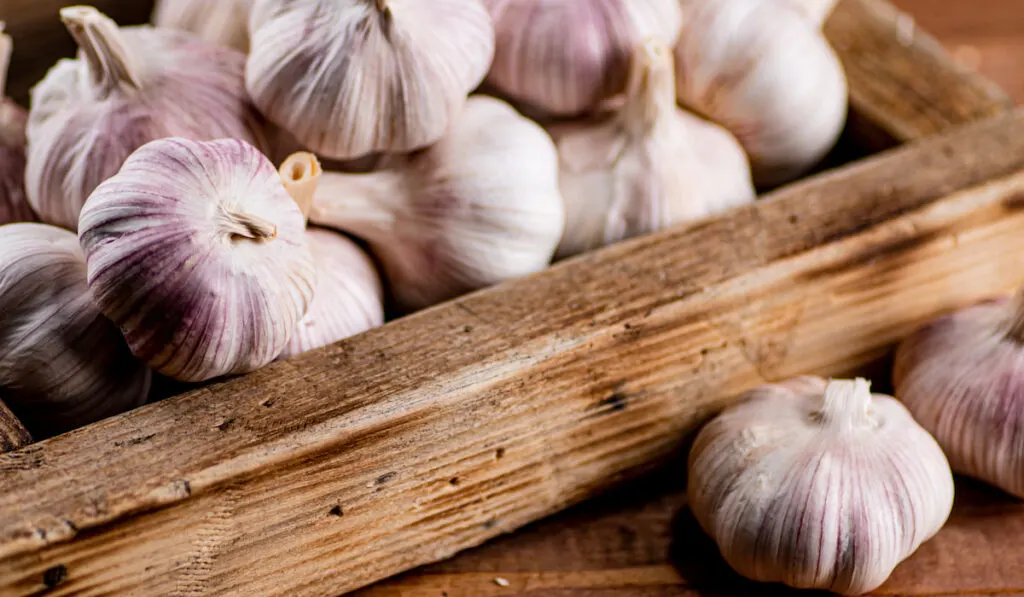
The first thing that you should know is that pulling the cloves from the head of the garlic can fast track their spoiling process. To keep your garlic fresh for a long time, do not pull its cloves.
Pulling the cloves exposes the cloves and the head to a fungal attack. Also, it allows moisture from the air to reach the inner cloves and decomposing microbes grow well in humid environment.
If you must pull the cloves, consume them immediately after you pull them and do not leave them out as they will go bad quickly. Also, do not remove the peel from the cloves.
2. Leave the Garlic in an Open Room
So long as the garlic is left unpeeled and the cloves are still attached to the head, they can last for up to 6 months or longer. An atmospheric factor that you should watch out for is humidity because if the room is richly humid, microbes can grow quickly in it, and it can lead to the quick decomposition of your garlic.
This means that if you want your garlic to last longer, you should keep it in a dry place. Also, the cloves should not be exposed to direct sunlight so that the little moisture in them does not start to evaporate.
3. Refrigerate the Garlic
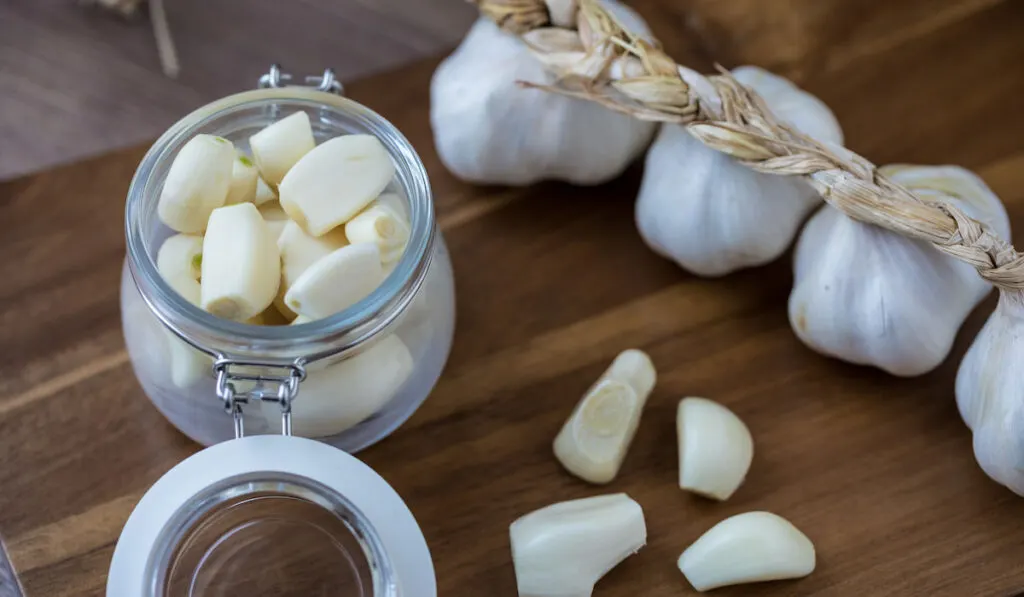
This works for garlic that you have sliced or removed the peels from. If the garlic is still in its peel and the cloves are attached to the head, there is no need to refrigerate it.
However, if the garlic is no longer in its peel, you can store it in a fridge for up to three weeks. Well, try eating your garlic immediately after you unpeel it.
Do not keep the garlic in the fridge without first sealing it in an airtight container.
The refrigerator, especially when you open it too often, may be too humid or wet for your garlic and this can encourage the roots to spoil quickly.
4. Leave the Garlic in Its Pack
If you bought your garlic from a store and it came in an airtight pack, do not remove it from the pack if you want it to last longer.
Well, you need to be sure that the pack is completely dry first. Though you can open the pack to pick some cloves, be sure to do so quickly and not get the remaining cloves wet.
5. Keep the Garlic in a Freezer
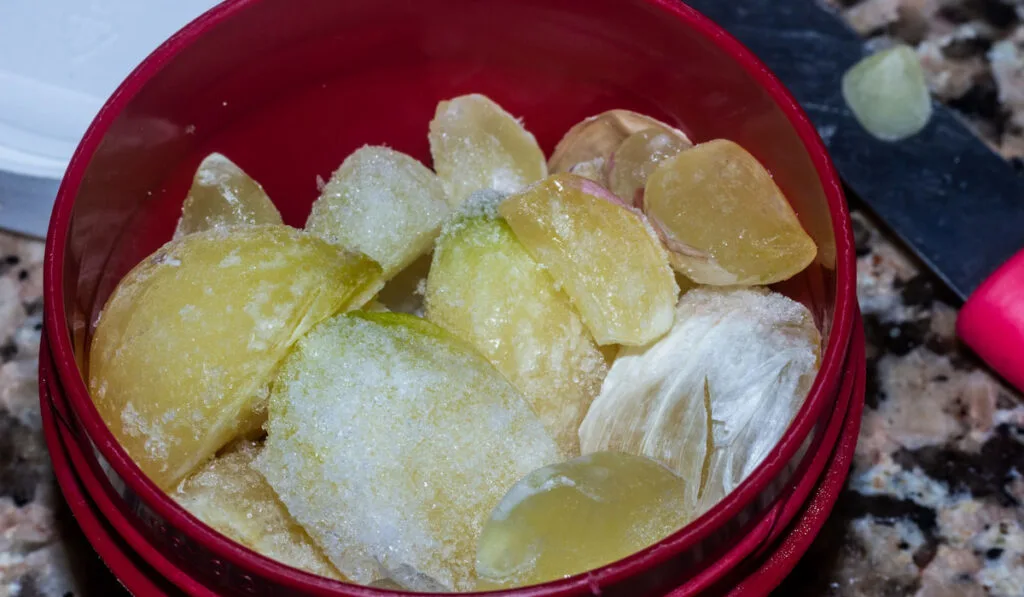
The best way to store garlic is to use a freezer. This method could preserve your garlic for 8-12 months, especially if you combined it with other methods such as leaving the garlic in its pack and not pulling the cloves off the head.
Note that there is a high chance of your garlic spoiling quickly immediately after you remove it from the freezer, so you want to use all your frozen garlic at once.
Ensure that the temperature of the freezer does not go significantly above 0°F. Also, do not regularly open the seal of the cloves so that you do not disturb the frozen cloves.
Properly store your garlic so that you can preserve its freshness for a long time.
Related Questions and Answers
Here are answers to some questions that you might want to ask:
1. For How Long Does Garlic Last?
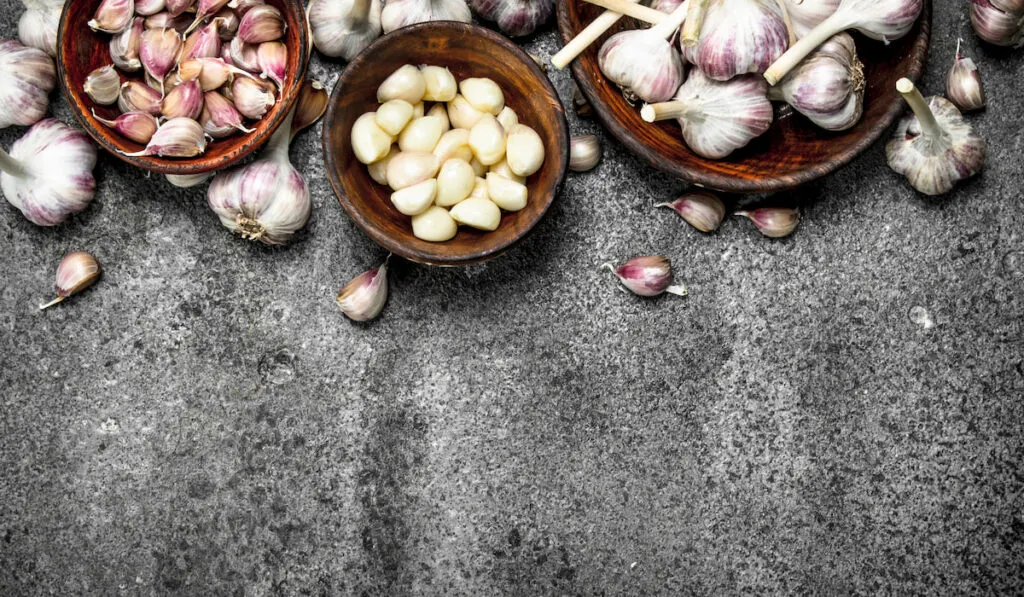
The shelf life of garlic depends on the way you preserve it. Here are different forms of garlic and how long they last:
- Peeled: The peel (both outer and inner) helps to prevent humidity and moisture from reaching the inner cloves, so when there is no peel, you expose your garlic to a humid room and microbes. Peeled garlic often does not last for more than one week.
- Unpeeled: The unpeeled garlic can last for three weeks to eight months depending on the way you store it.
- Cut or Sliced: When you cut or slice garlic, it spoils quickly. It can go completely bad in less than three days, especially if you leave it exposed.
- Sealed: If you leave your garlic in an airtight container, it can last for months so long as you do not open the container regularly.
To help your garlic last for a longer time, keep it unpeeled in an airtight container.
2. Can You Eat Bad Garlic?

Bad garlic is simply what it is; bad for you. Bad garlic has fewer nutrients than it previously did because it is already decomposing. Also, the decomposing microbes (mainly fungi) can leave toxins in the garlic and these toxins can harm you when you eat the garlic.
There is also a high chance of sulfur buildup in your body when you consume bad garlic.
What to do with sprouted garlic? If the garlic has sprouts but is not yet bad, you may decide to cook with it or simply eat it.
If you like, you can also plant it. Garlic sprouts make a beautiful indoor plant and when it grows, you get to enjoy sweet and nutritious garlic.
3. Is It Ok to Eat Old, Raw Garlic?
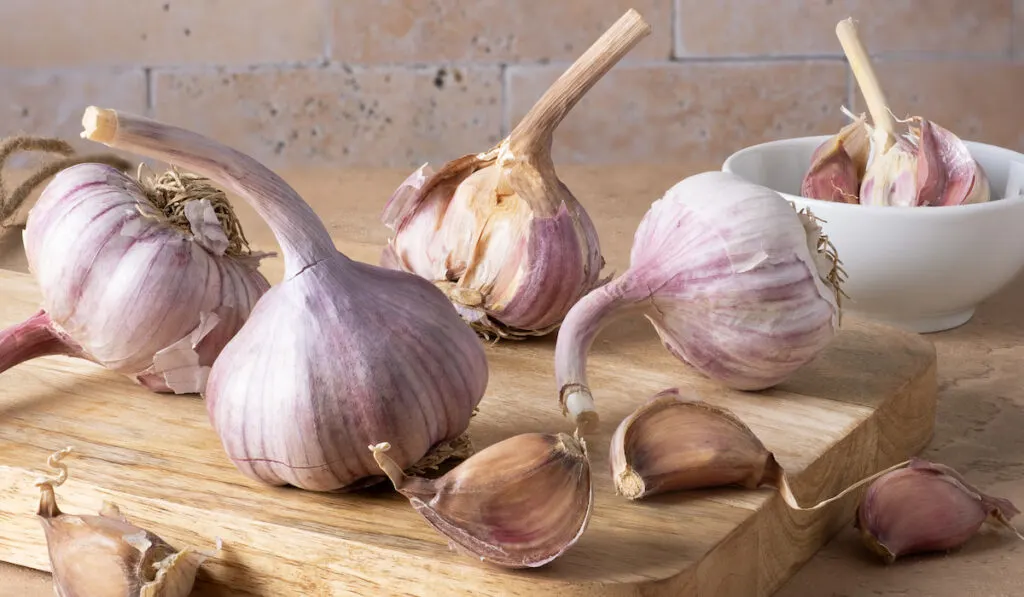
Of course, raw garlic has different uses and medicinal values. You can eat raw garlic so long as you do not eat too much.
Garlic is packed with sulfur, so eating more than you need can lead to bloating of your stomach, bad breath, and other minor health challenges. Do not eat more than two cloves daily.
You can also use raw garlic to make a salad or any other dish. When combined with ginger, turmeric, and other roots with medicinal value, a garlic dish is a super delicious and nutritious food for you.
Conclusion
Even though garlic is rich in nutrients and is medicinal, it can go bad if you do not store it well. This is why you should make use of any of the storage tips mentioned in this article. Remember that you should dispose of bad garlic so that you do not get sick.
